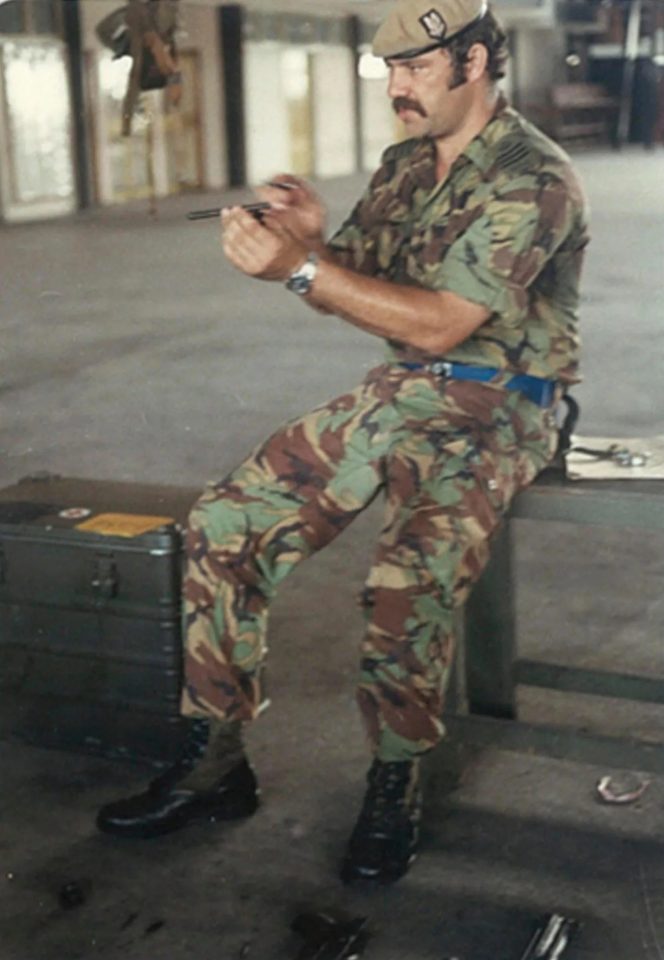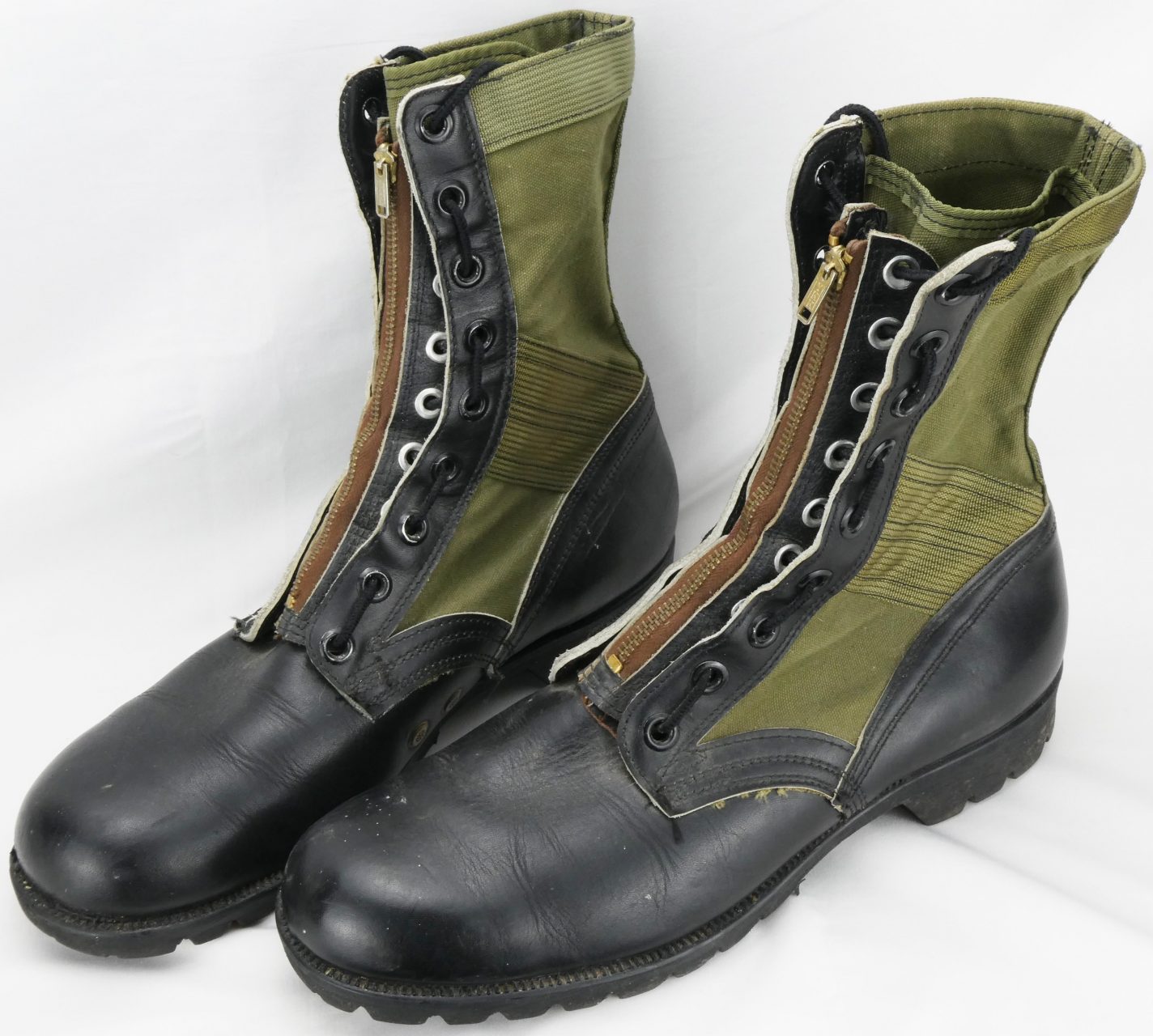Jungle boots were made due to the hot, humid, and wet realities of jungle warfare that rotted then-standard issue leather boots and made wearing them very uncomfortable. Instead of full leather construction, jungle boots had cotton canvas that was lighter weight and faster-drying as well as larger grommeted drain holes. The bottom part of the soles were also directly molded onto the upper part, since the earlier two-part construction had a tendency to fall apart, and most have a steel spike protection plate integrated into the footbed [1].
Third Pattern, Vibram Sole:
This is the most commonly encountered type of jungle boot. Although Panama soles were introduced in the late 1960’s, many companies used remaining Vibram soles to fulfil their contracts, making them by far the most commonly encountered jungle boot sole type.
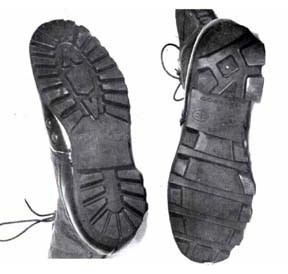
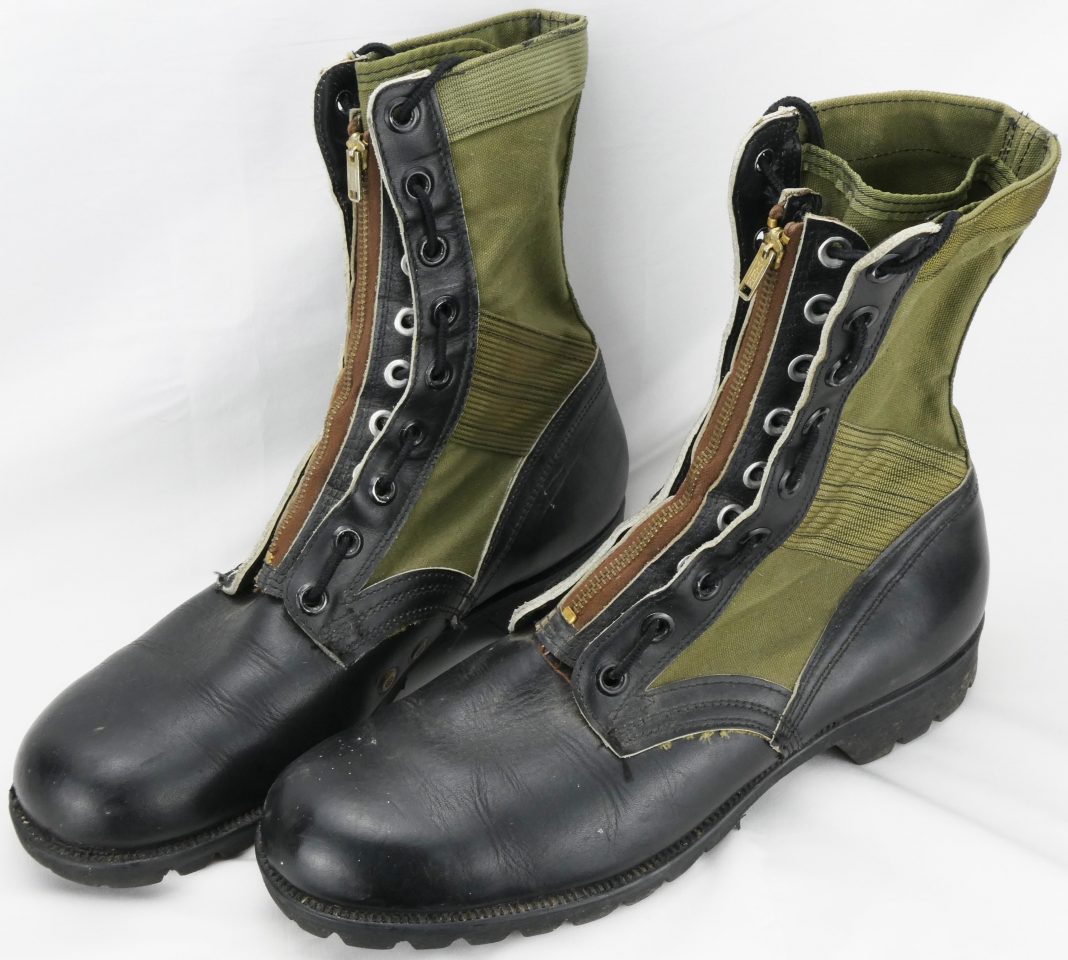
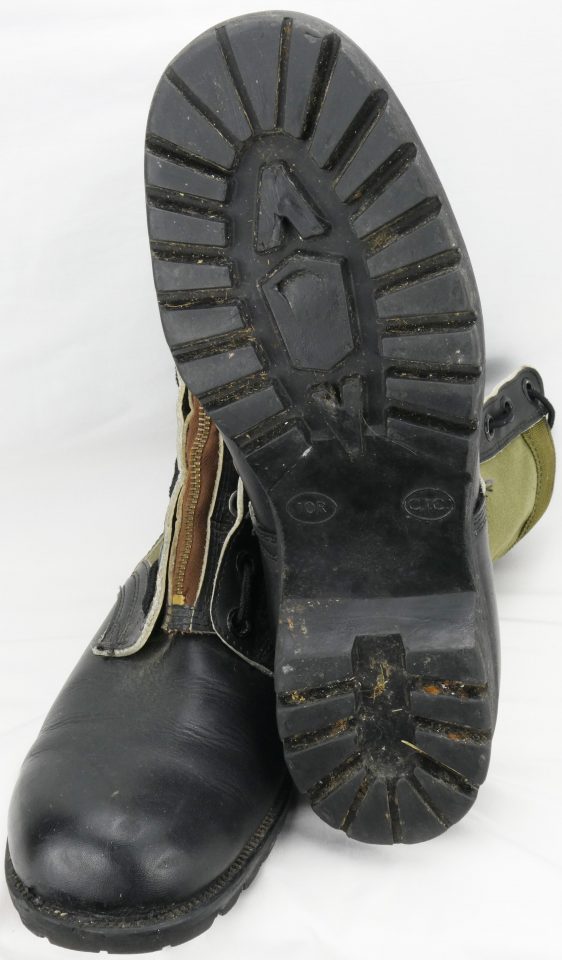
Sides:
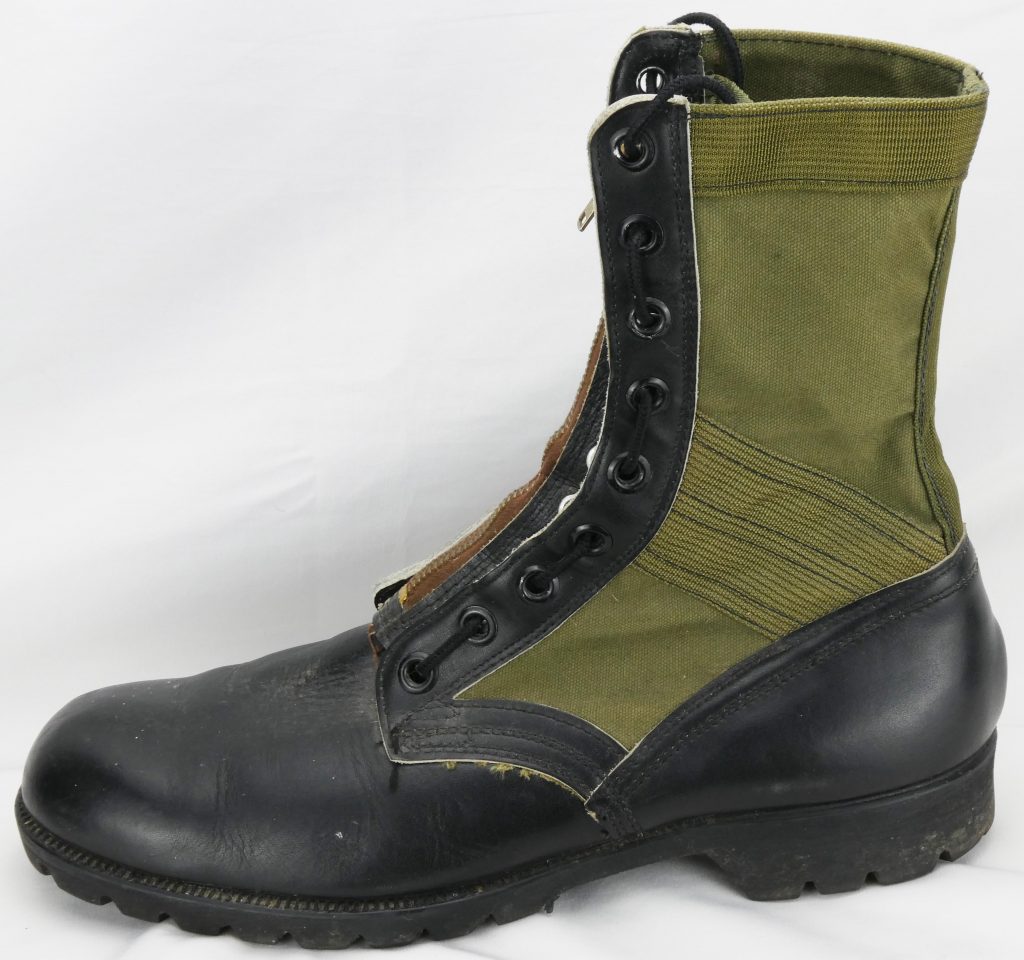
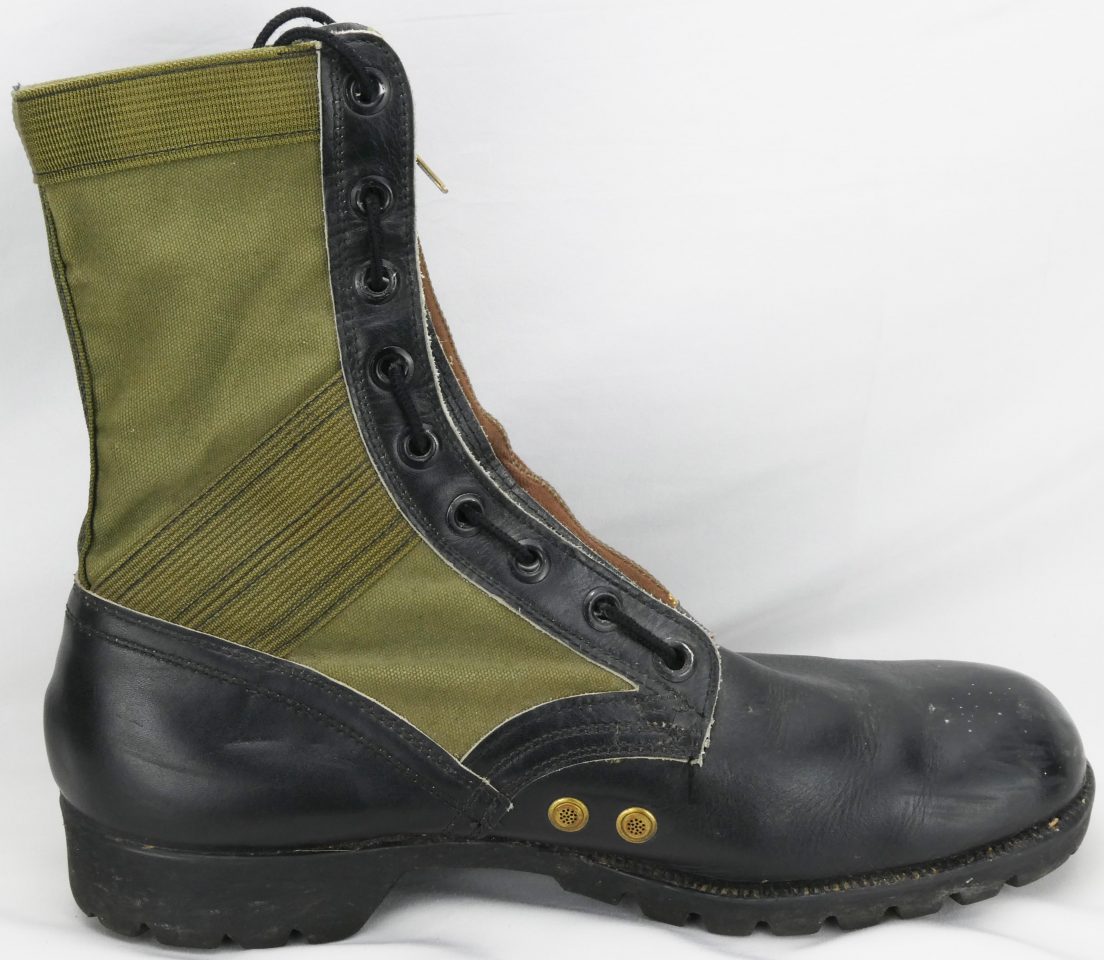
Shoelace:

Front:
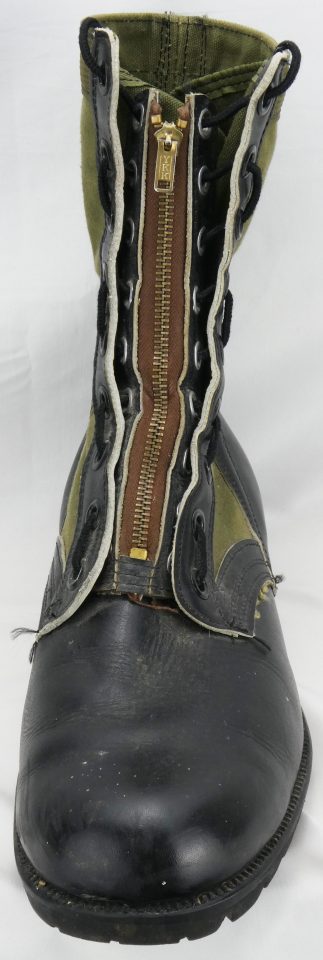
Zipper lace-in insert was a private purchase item, likely produced in South Vietnam.
Zipper:

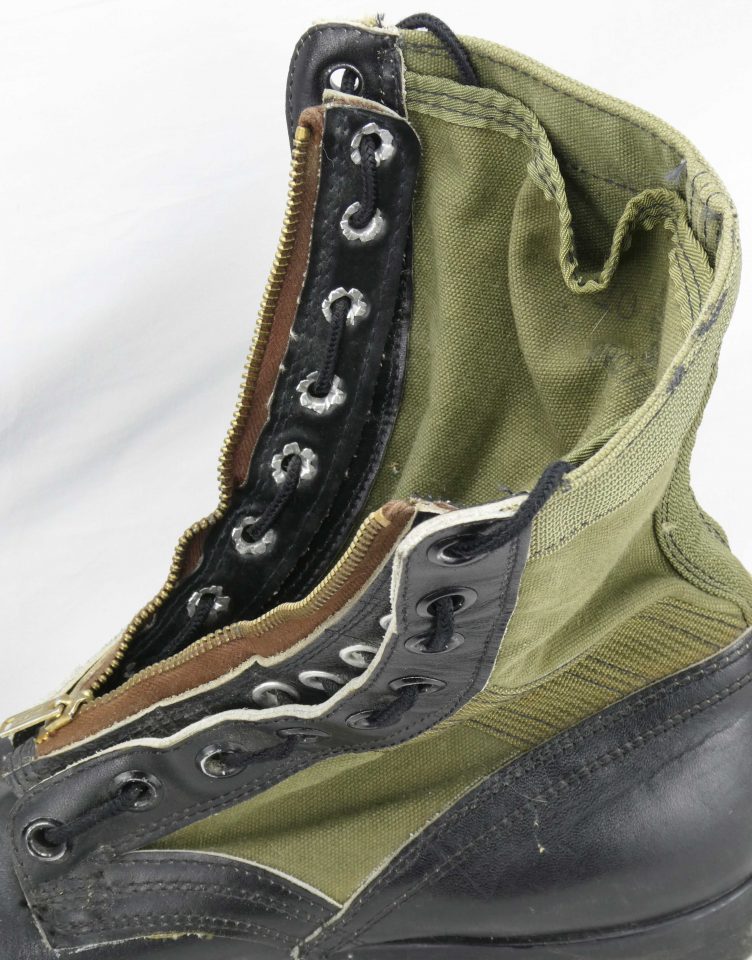
YKK zipper is Japanese-made. These appear to have been produced in South Vietnam [3][4].
The zipper insert allows the boots to be put on and taken off more quickly since they no longer have to be laced. The 9th Infantry Division officially tested zipper boots in 1969 as part of Operation Safe Step, where soldiers receiving the zipper boots felt they drained faster and were more comfortable than standard issue jungle boots, although “[no] clinical difference in the progression or severity of foot disease was detected between the” unmodified and zipper-modified jungle boots [5].

Zippered boots were also trialed in the Delta Footwear Program across MACV (Military Assistance Command Vietnam) and were authorized for “Special Forces, Ranger companies, advisory teams, combat tracker and scout dog platoons, and infantry or mechanized infantry battalions operating in water inundated regions” [7]. Unlike this example, the officially tested zipper boots appear to have US-manufactured zippers. Another example of a Delta Footwear Program experimental boot can be seen here: https://iacmc.forumotion.com/t12548-experimental-delta-footwear.
Stamp:
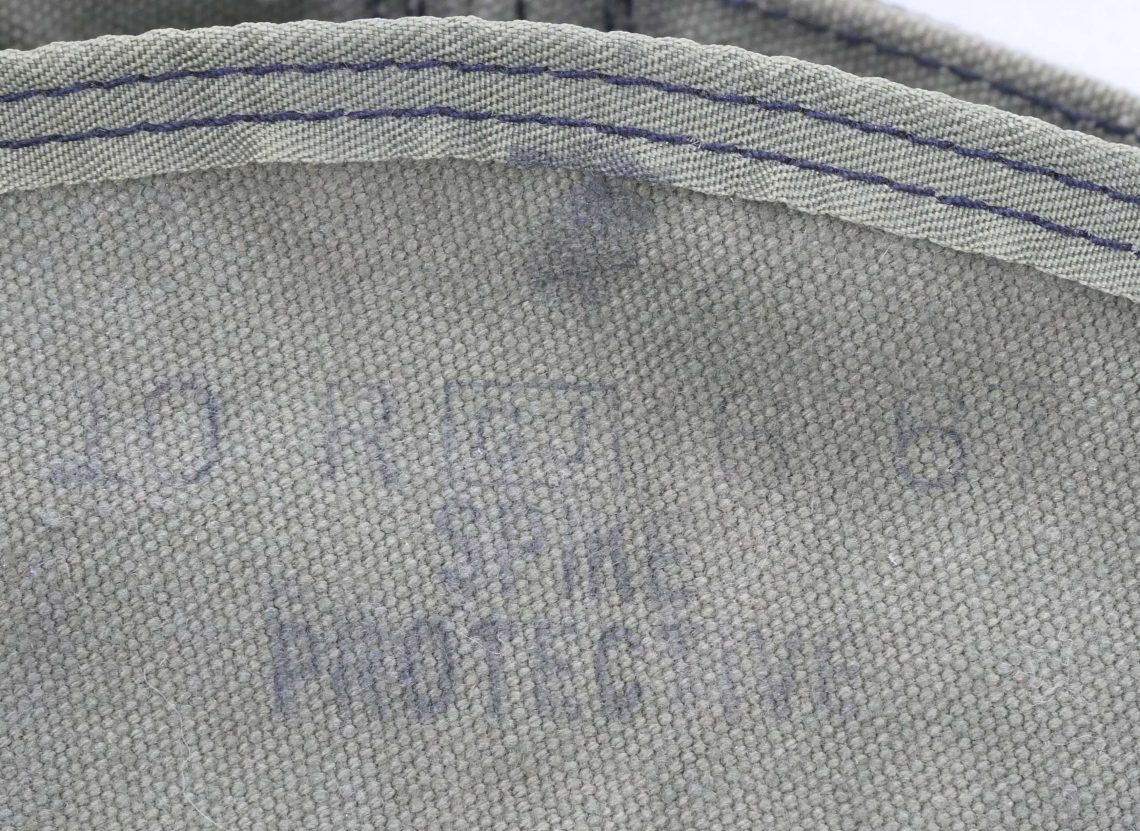
June 1967 date. “GJ” in box indicates it was manufactured by Safety First Shoe Co. in Nashville, Tennessee, part of Genesco, Inc [8].
Inside:
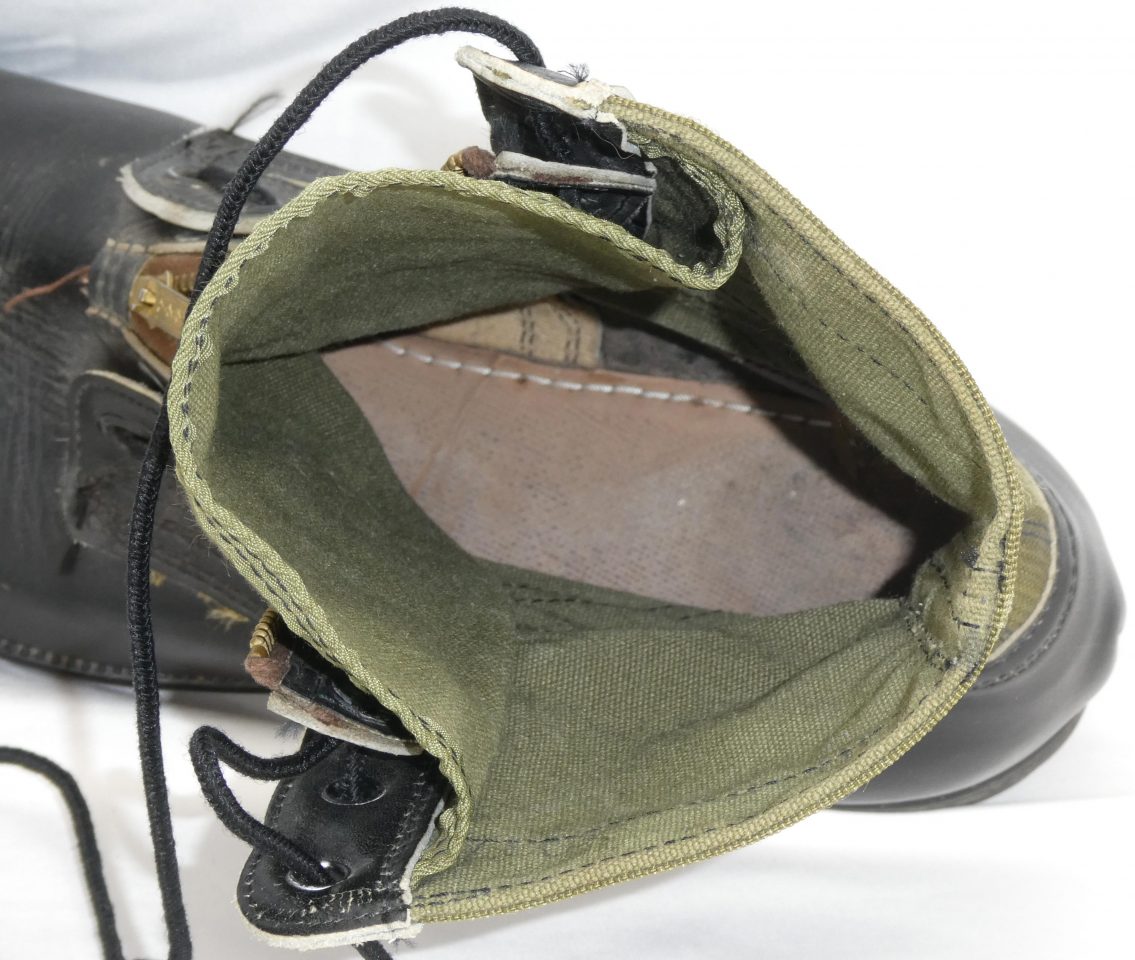
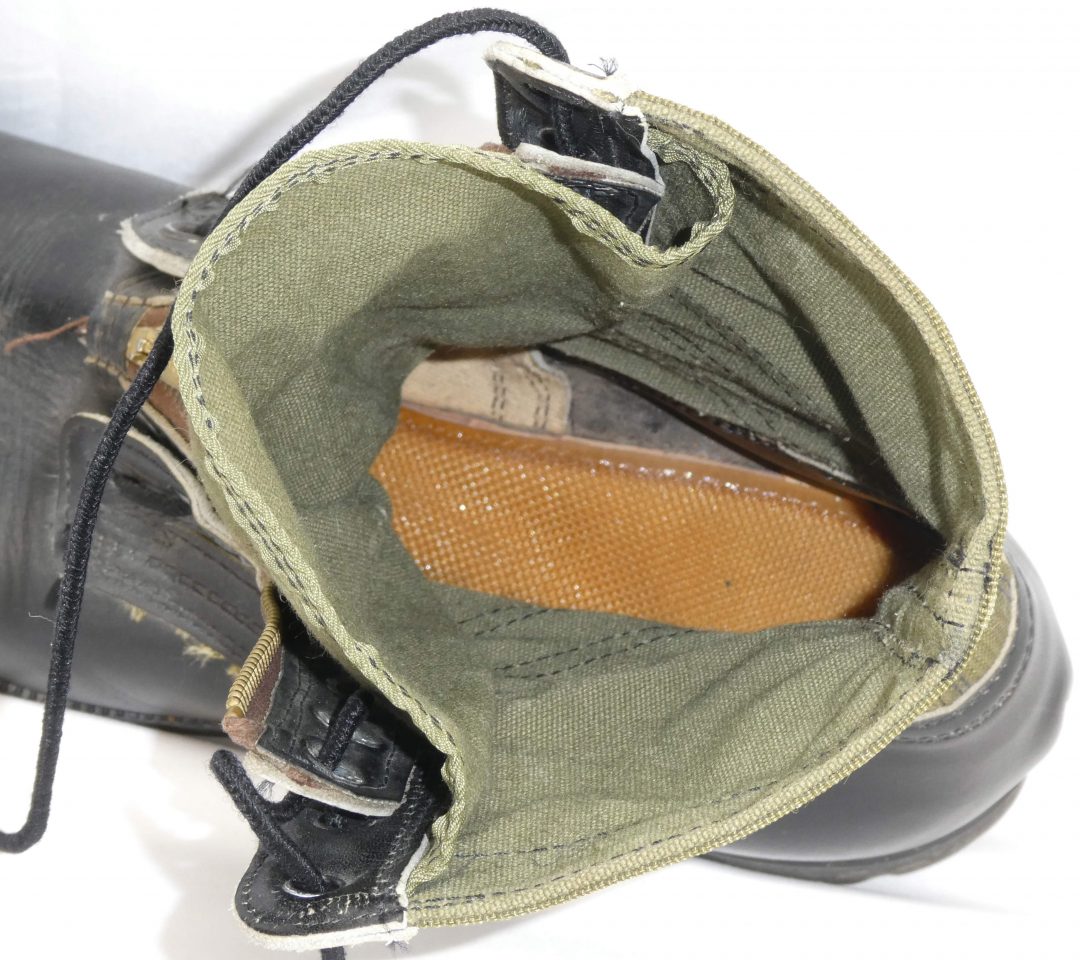
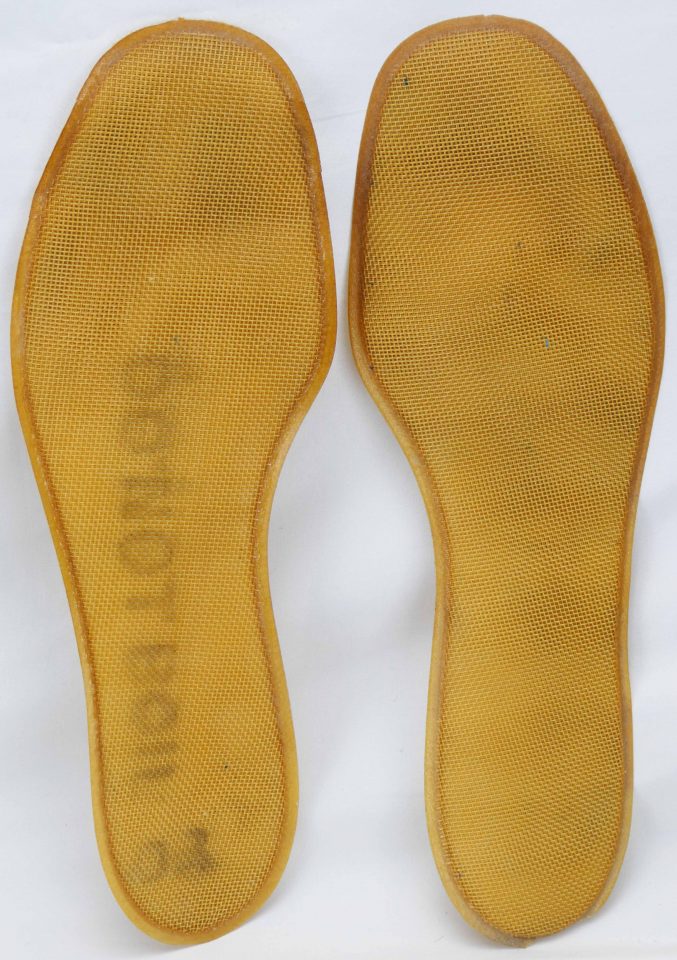
Insoles are meant to help circulate air with mesh construction making them act like an airbag when compressed/decompressed during cyclic walking motion [9].
Usage Photo:
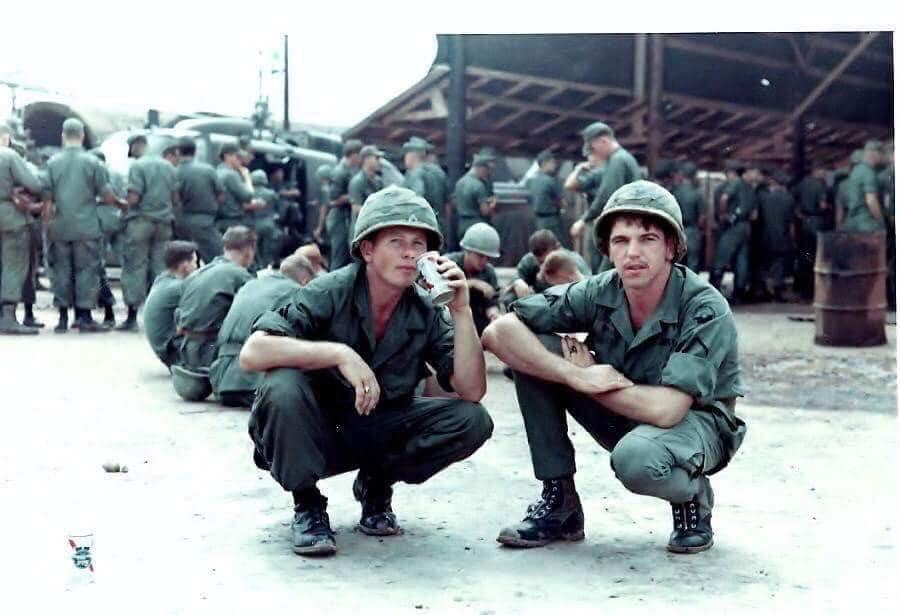
Although created for US forces, commonwealth troops serving in Vietnam would use jungle boots bartered from Americans as well [9]. After Vietnam, soldiers from Commonwealth nations continued to be issued and used jungle boots until the early 2000’s [11].
